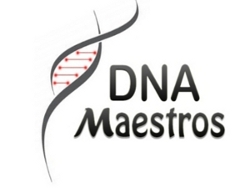Biomod/2012/DNA Maestros:Conclusion

Home Introduction The Project Materials & Methods Results and Discussion Conclusion Team Members Acknowledgements
Conclusion
Here we have demonstrated the disruption of a cargo-loaded DNA icosahedron in response to a chemical cue in bulk solution, with the concomitant release of the encapsulated cargo. We have engineered the upper half of the icosahedral DNA scaffold with cdGMP aptamers to give rise to a new, chemically responsive structural scaffold. In the presence of cdGMP, these aptamers fold, bind cdGMP and thus displace the lower half of the icosahedron. This allows the release of the encapsulated molecular payload into bulk solution. The most promising aspect of the successful achievement of such functionality is the potential use of 3D polyhedra as nano-vehicles for the smart delivery of biologically important molecules.
Future Implications
Being able to target such cargo-loaded polyhedra to specific locations in an organism is important because it reduces the total amount of drug administered. However, if the drug is released only with a specific chemical stimulus, that would allow the possibility of having an “on-demand” release of drug, with targetable capsules that have long lifetimes and residence times at the affected tissue.
Chemically sensitive DNA-nanovehicles have the potential to also act as tools to probe diverse biological phenomena. If we can get past the significant challenge of sending such loaded chemically sensitive icosahedra to the cytoplasm, we can chemically trigger the release of functional molecules from the nanocapsule. This can be used to study metabolic networks inside cells.

